Abstract
Ribosome concentration, ribosome distribution on sucrose density gradients, and in-vitro ribosomal amino-acid incorporation (noncollagen and collagen synthesis) were studied in muscle biopsy samples obtained from 30 patients with Duchenne muscular dystrophy, seven patients with Becker muscular dystrophy, and 10 with facioscapulohumeral muscular dystrophy. Ribosome concentration was normal in Duchenne and facioscapulohumeral and decreased in Becker muscular dystrophy. Distribution of ribosomes in sucrose density gradients showed abnormalities (sharp monosomal peak and fewer polyribosomes) only in Duchenne muscular dystrophy and was normal in the other two types. In-vitro amino-acid incorporation of ribosomes in Duchenne muscular dystrophy revealed high collagen and low noncollagen synthesis of the heavy polyribosomes. This abnormality is controlled by an undetermined enzymatic factor belonging to the soluble enzyme fraction. Supplementation of the dystrophic heavy polyribosomes with normal soluble enzymes restored the synthesis of collagen to that of the controls. Heavy polyribosomes extracted from normals or from carriers produce proportionately more collagen in the presence of soluble enzyme fraction from Duchenne muscular dystrophy than in the presence of their homologous enzymes. In Becker muscular dystrophy, both noncollagen and collagen synthesis of the heavy polyribosomes were increased, under the influence of ribosomal factors. The different protein synthesis in Duchenne and Becker muscular dystrophies suggests that these conditions are non-allelic. In facioscapulohumeral muscular dystrophy the changes in protein synthesis occurred only in the early stage of the disease and consisted of increased noncollagen synthesis of the light polyribosomes, while the heavy polyribosomes had normal activity including collagen synthesis. This reaction was controlled by ribosomal factors.
Full text
PDF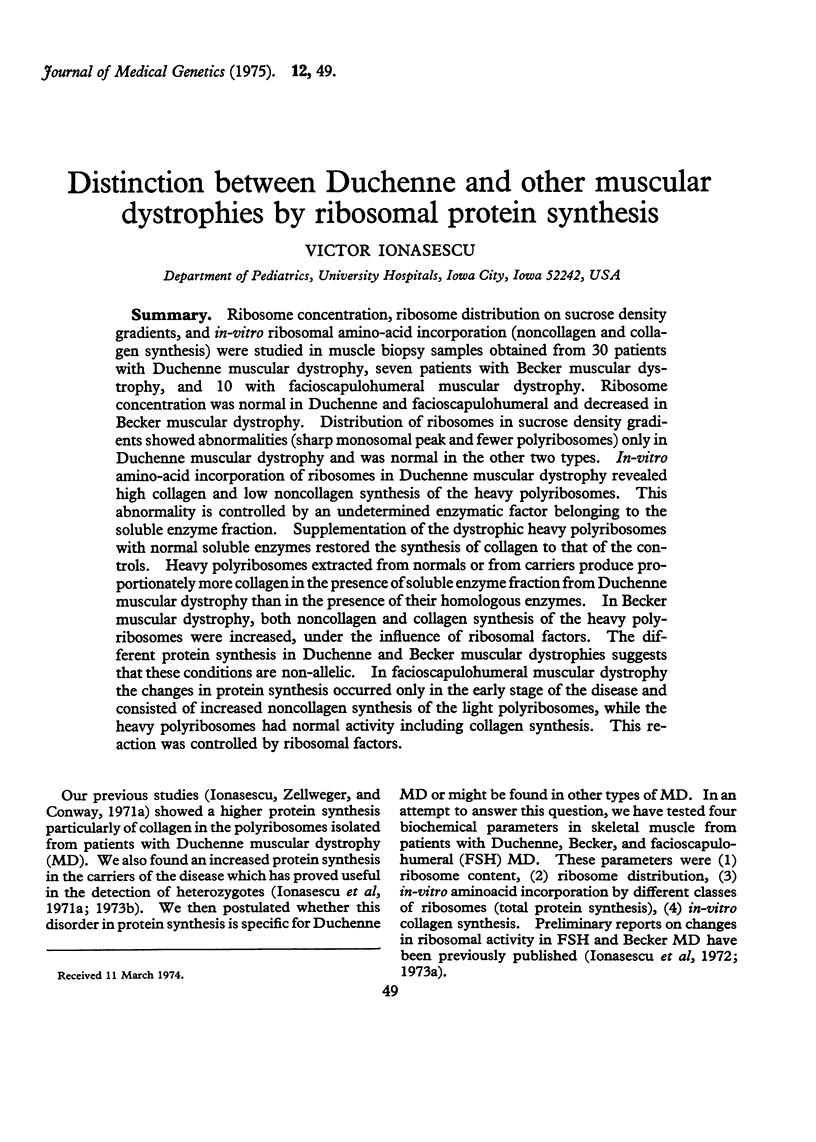
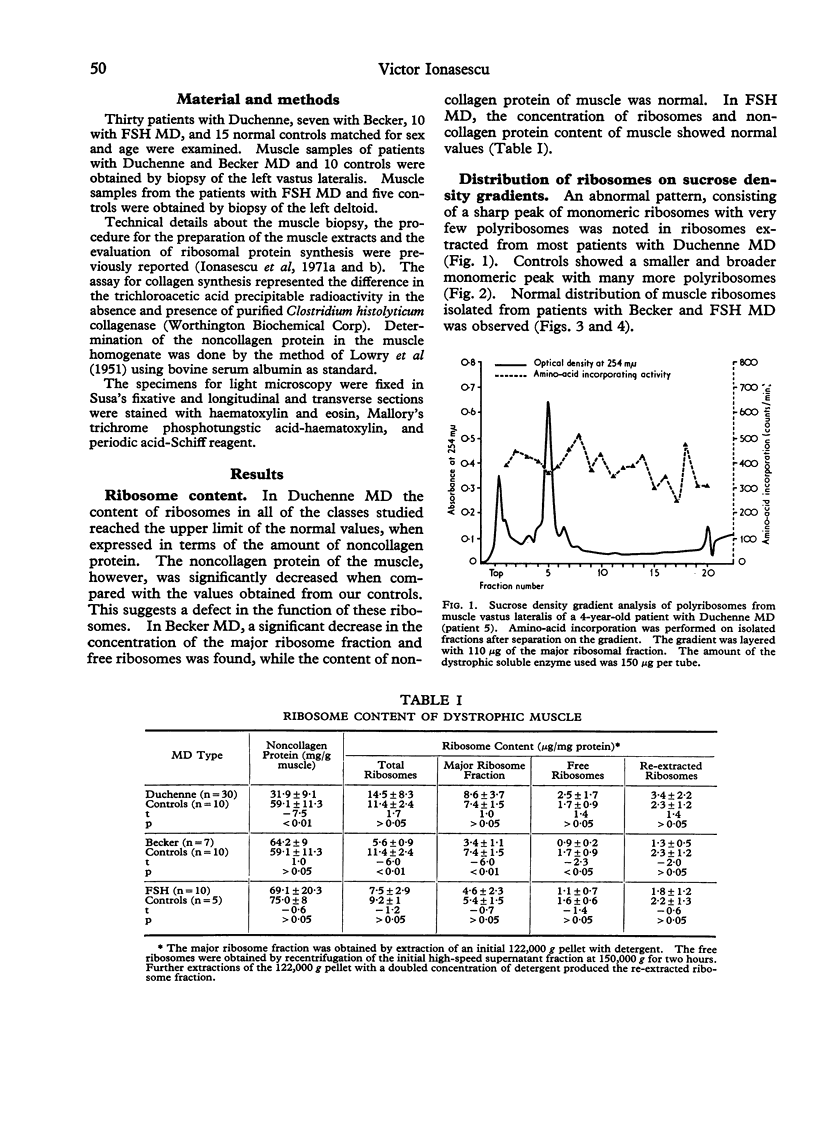
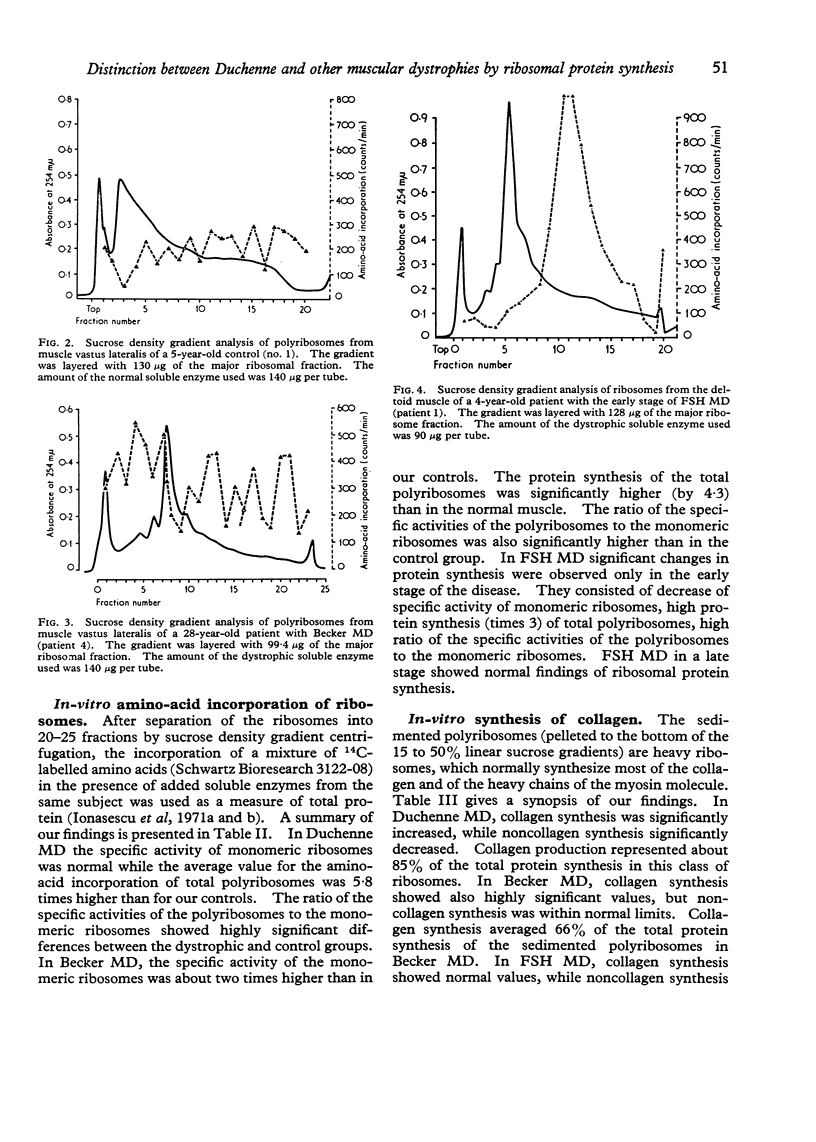

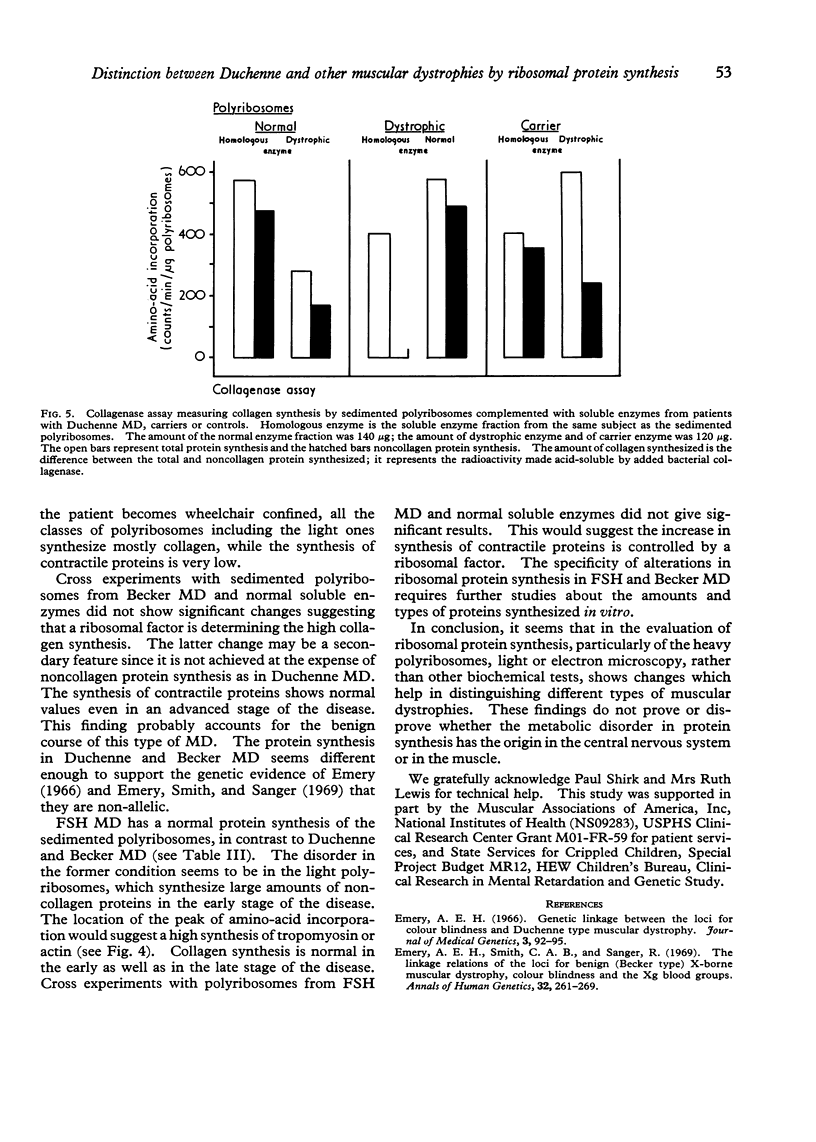
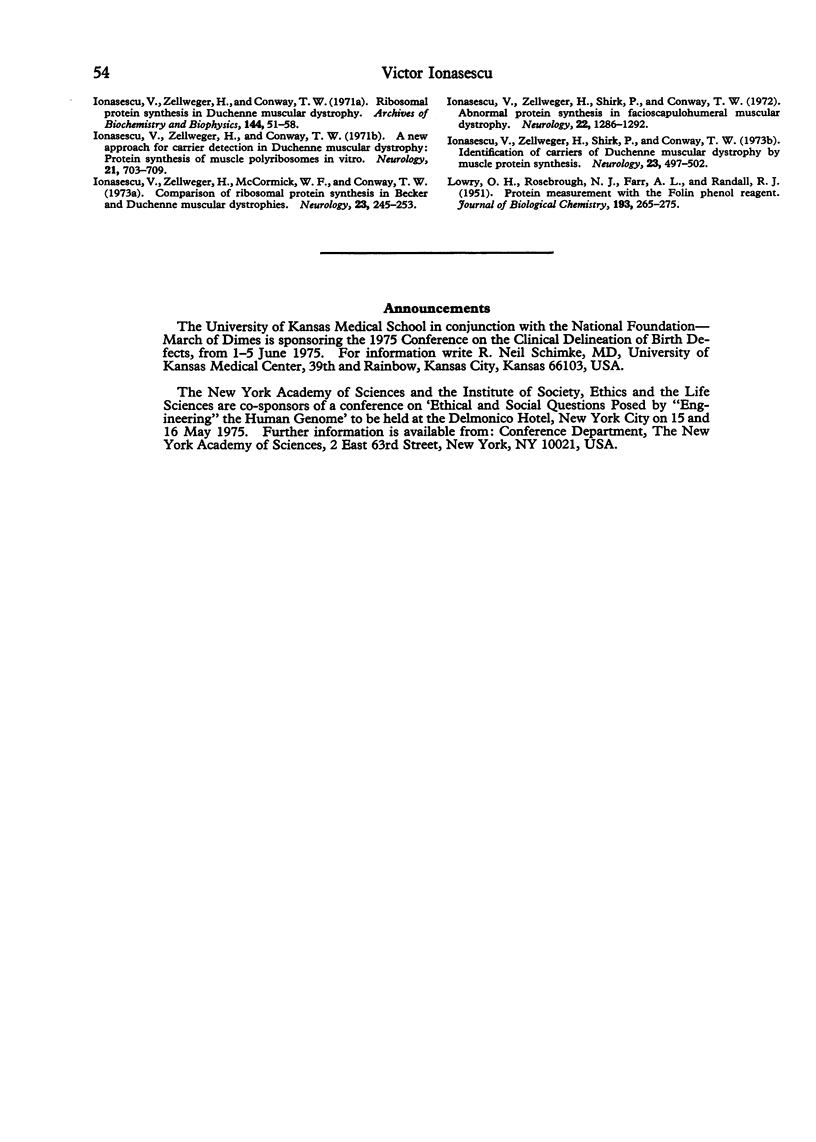
Selected References
These references are in PubMed. This may not be the complete list of references from this article.
- Emery A. E. Genetic linkage between the loci for colour blindness and Duchenne type muscular dystrophy. J Med Genet. 1966 Jun;3(2):92–95. doi: 10.1136/jmg.3.2.92. [DOI] [PMC free article] [PubMed] [Google Scholar]
- Emery A. E., Smith C. A., Sanger R. The linkage relations of the loci for benign (Becker type) X-borne muscular dystrophy, colour blindness and the Xg blood groups. Ann Hum Genet. 1969 Jan;32(3):261–269. doi: 10.1111/j.1469-1809.1969.tb00075.x. [DOI] [PubMed] [Google Scholar]
- Ionasescu V., Zellweger H., Shirk P., Conway T. W. Abnormal protein synthesis in facioscapulohumeral muscular dystrophy. Neurology. 1972 Dec;22(12):1286–1292. doi: 10.1212/wnl.22.12.1286. [DOI] [PubMed] [Google Scholar]
- Ionasescu V., Zellweger H., Shirk P., Conway T. W. Identification of carriers of Duchenne muscular dystrophy by muscle protein synthesis. Neurology. 1973 May;23(5):497–502. doi: 10.1212/wnl.23.5.497. [DOI] [PubMed] [Google Scholar]
- LOWRY O. H., ROSEBROUGH N. J., FARR A. L., RANDALL R. J. Protein measurement with the Folin phenol reagent. J Biol Chem. 1951 Nov;193(1):265–275. [PubMed] [Google Scholar]


